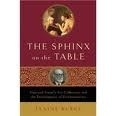ILLUSTRATED. Sigmund Freuds collection of Egyptian, Greek and Roman antiquities is one of the art worlds best-kept secrets. Over a forty year period he amassed an extraordinary array of nearly three thousand statues, vases, reliefs, busts, rings and prints. For Freud, psychoanalysis and his art collection developed together in a symbiotic, nourishing relationship, each informing and enriching the other. Freud used myth to illustrate controversial theories like the Oedipus complex, situating ancient symbolism in a modern context. He explored the archaeology of the mind, unearthing his patients dreams and memories while creating a personal museum of ancient treasure. Freud compared the process to analysis, where he, cleared away material, layer by layer, to the technique of excavating a buried city. To create a portrait of Freud the art collector, Janine Burke builds a vibrant, richly detailed and intimate image of his life and times, tracing Freuds taste for beautiful things back to his earliest years. The Sphinx on the Table is set against the glittering, decadent, backdrop of fin-de-siecle Vienna where an artistic flowering took place in painting, theater, writing and architecture. Burke opens a narrow window and provides a rich view of Freud the man in this sympathetic but not hagiographic account. An obsessive collector of antiquities, especially small Egyptian, Greek and Roman statues, Freud made his consulting room into a museum and took much of his enormous collection with him on holiday. Well aware that collecting reflects sublimated need, Freud never asked himself what that need was, though he used his antiquities to bind himself to colleagues and stimulate analysands. Freud’s “old and grubby gods” provided objective correlatives for his theories. Yet some of them, such as his favorite little bronze of Athena, provided evidence of psychic forces-especially feminine ones-that he was neither able to integrate into his theories nor acknowledge as part of himself. Burke anchors discussion of the major areas of Freud’s collection in a sketchy chronological biography, creating unnecessary confusion. However, chapters on the American poet H.D.’s relationship with Freud, and on Freud’s flight from the Nazis and his last days in exile, are fascinating and poignant. This is an illuminating portrait of a man whose intellect was rooted in sensuality and whose neuroses were part of his genius. 24 pages of photos.
SPHINX on the TABLE, THE : Sigmund Freud’s Art Collection and the Development of Psychology
$14.95
Sold Out
Additional Information
| Author | Burke, Janine |
|---|---|
| Number of pages | pp.455 |
| Publisher | Walker and Co |
| Year Published | 2006 |
| Binding Type | Hardcover in Dustjacket |
|---|
